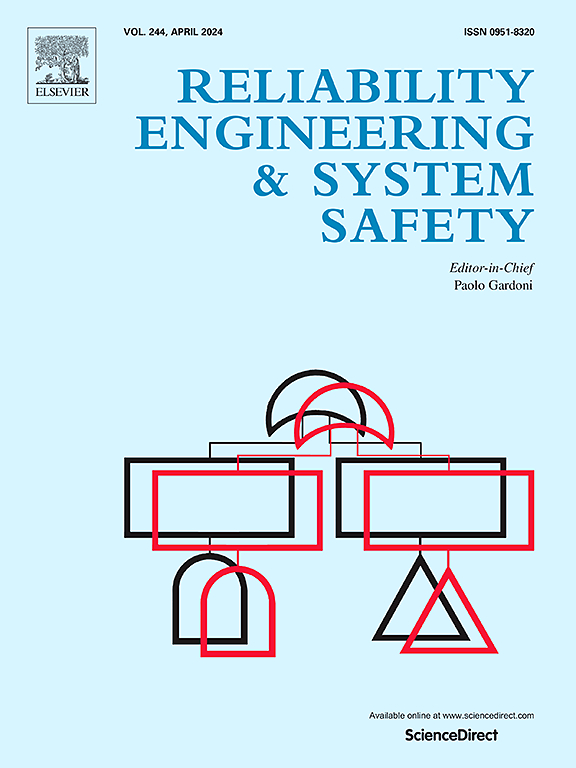Optimal operation and maintenance scheduling in generalized repairable m-out-of-n standby systems with common shocks
IF 9.4
1区 工程技术
Q1 ENGINEERING, INDUSTRIAL
引用次数: 0
Abstract
This paper contributes by modeling a new class of repairable, dynamic -out-of- standby systems operating in random shock environments. Operating components are exposed to a common shock process and can fail due to external shocks and/or internal deterioration, causing the failure of the entire mission. Therefore, it is pivotal to implement an operation and maintenance schedule (OMS), according to which any operating component may be preventively replaced by a standby component to undergo perfect maintenance during the mission. Due to heterogeneity of system components, different OMSs incur different expected mission cost (EMC) and mission success probability (MSP). We formulate a new optimization problem to determine the optimal OMS that minimizes the EMC while satisfying a certain level of MSP. The solution methodology encompasses a new recursive procedure to evaluate MSP and the realization of genetic algorithm. A case study of a chemical reactor cooling system is conducted to showcase the proposed model and study the effects of component heterogeneity as well as several key model parameters on the system performance. The mission cost sensitivity analysis is also demonstrated, providing insights on the most cost-effective component performance or shock resistance improvement. The proposed model extends the OMS study of standby systems in literature from non-shock to shock operating environments.
求助全文
约1分钟内获得全文
求助全文
来源期刊

Reliability Engineering & System Safety
管理科学-工程:工业
CiteScore
15.20
自引率
39.50%
发文量
621
审稿时长
67 days
期刊介绍:
Elsevier publishes Reliability Engineering & System Safety in association with the European Safety and Reliability Association and the Safety Engineering and Risk Analysis Division. The international journal is devoted to developing and applying methods to enhance the safety and reliability of complex technological systems, like nuclear power plants, chemical plants, hazardous waste facilities, space systems, offshore and maritime systems, transportation systems, constructed infrastructure, and manufacturing plants. The journal normally publishes only articles that involve the analysis of substantive problems related to the reliability of complex systems or present techniques and/or theoretical results that have a discernable relationship to the solution of such problems. An important aim is to balance academic material and practical applications.
 求助内容:
求助内容: 应助结果提醒方式:
应助结果提醒方式:


